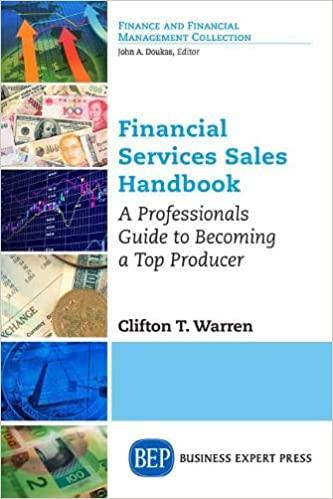Question
The Wellcome Trust is a charitable endowment fund, registered with the UK Charity Commission. The Wellcome Trust was established in 1936 under the will of
The Wellcome Trust is a charitable endowment fund, registered with the UK Charity Commission. The Wellcome Trust was established in 1936 under the will of Henry Wellcome, founder of the Wellcome pharmaceutical company. Initially the Trust was funded from company profits as it owned shares of the company and received dividends. In 1992, the shares were sold thus severing direct links with the pharmaceutical industry. The money raised was invested in an endowment fund with the sole purpose of providing income for the Wellcome Trust. That endowment is now worth over 14 billion and provides an income annually of 600700 million. Despite its not-for-profit status and being a charity, the Trust is still among the top 100 companies paying taxes to the UK government, mainly VAT (value added tax) and transaction tax on the investment portfolio. The Wellcome Trust funds research in universities and other educational institutions in the field of bio-medical research for humans and animals. It also funds a public engagement program to promote understanding of science. It has recently created a new subsidiary, Syncona, endowed with 200 million in funds, which will invest in companies in the bio industry start-up or small companies in order to ensure practical adaptation of the science for end users. Academic institutions apply for funding directly to the Trust, where an internal team of scientists creates a shortlist. Final selection is made by expert committees from across the world, chosen for their expertise. The Trust has a staff comprising 2000 employees. Half of these work at the Trust headquarters or at the adjoining Museum, and half work in Cambridge, England at the Sanger Institute, a wholly-owned not-for-profit subsidiary of the Institute devoted to genome research. The Trust also funds research outside of the UK through academic institutions in Malawi, Kenya, South Africa, Vietnam and Thailand. Funding overseas is cost effective and the work increases the level of science and research competencies in those countries. The Trust also partners with other charity, governmental and not-for-profit institutions that could be seen as competition but in reality work cooperatively. These institutions include universities, the Gates Foundation and the Howard Hughes Foundation. 192 ERM Enterprise Risk Management The major stakeholders are: Charity commission (a charter needs to be complied with). UK government encouraging a culture of sciences (Education, Health). NHS National Health Service in the UK. European Union authorities (policy influencing, animal research, stem cell research, etc.). Animal protection groups (not high on their list but still be aware of very limited action). University community, especially in the UK. Medical Research Council (GOV) and Cancer Research UK (Charity). The institutes mission statement clearly defines its purpose: To achieve extraordinary improvements in human and animal health. In pursuit of this, we support the brightest minds in biomedical research and the medical humanities. However, beyond research grants, the Institutes operate in different directions to improve the public understanding and knowledge of the biomedical science and advances, and that includes: A robust public engagement to inform the public through the Wellcome Collection (exhibits collected by Henry Wellcome which are all linked to health and medicine) and visiting exhibitions one held in early 2013 was about Death: art related to death. Exhibitions are planned to be controversial and ask the viewer to question science and medicine. The current exhibition includes paintings from disabled and psychiatric patients in Japan. Education in schools (Darwin, etc.). Improvement of science teaching in schools (funding of residential courses for teachers).
1.
. Use the Wellcome Trust Corporate Risk Matrix to identify critical risks for a company of
your choosing or one that your instructor provides.
(a) Relate these critical risks to the strategies and strategic plan of the organization.
(b) Define the impact of these critical risks to the organization and develop a risk management strategy for each.
2. Identify potential risks to reputation that could affect an organization like Wellcome Trust.
3. In this case it was determined that the horizon for investments in ERM is longer than other
measures used to incentivize managers. Develop an incentive program for executives and
managers of the Wellcome Trust that will be in sync with a longer investment horizon for
ERM.
4. Not-for-profit enterprises do not produce profits. Traditional measures used to assess the
value, and change in value, of publicly traded organizations are not appropriate to evaluate
the ERM initiative.
(a) What measures would you recommend that not-for-profit organizations use to assess
the value of their ERM implementation?
(b) How can the not-for-profit enterprise provide evidence that their ERM activities are
producing the value and not other activities or influences?
5. What are the characteristics of a good athletic coach? Translate these characteristics into
the characteristics for being a good risk management coach. Would you add additional
characteristics or competencies, if so, what, and why?
Step by Step Solution
There are 3 Steps involved in it
Step: 1

Get Instant Access to Expert-Tailored Solutions
See step-by-step solutions with expert insights and AI powered tools for academic success
Step: 2

Step: 3

Ace Your Homework with AI
Get the answers you need in no time with our AI-driven, step-by-step assistance
Get Started


